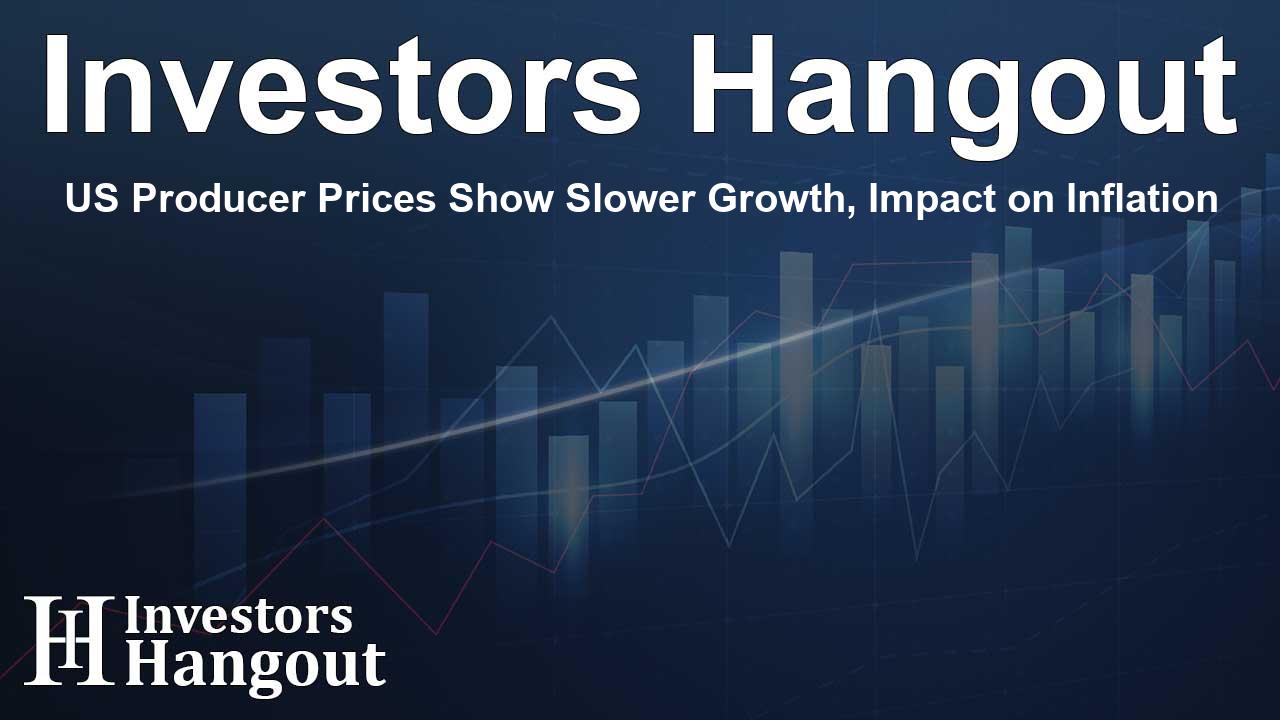US Producer Prices Show Slower Growth, Impact on Inflation

US Producer Prices Increase at a Slower Rate
In recent economic news, US producer prices saw an increase of 0.2% in December, a figure that fell short of expectations. This trend suggests an easing of inflationary pressures, which could influence the Federal Reserve's approach to future interest rate decisions.
Details of the Producer Price Index
According to data released by the Labor Department, the Producer Price Index (PPI) for final demand rose by 0.2% month-on-month. Analysts had predicted a figure matching November's increase of 0.4%, making December's slower rate a notable development in the current economic landscape.
Contributing Factors to Price Changes
The increase in producer prices during December was primarily attributed to a 0.6% rise in the index for final demand goods. Interestingly, the prices for services remained unchanged, indicating that the fluctuations are concentrated in the goods segment rather than a broader range of services.
Year-Over-Year Changes in PPI
When comparing the data year-over-year, the PPI increased by 3.3% in December, up from 3.0% in the previous month. However, this growth still fell short of economists' predictions of 3.5%, suggesting a potential slowdown in inflationary trends overall.
Implications of the Slower Growth Rate
The slower rise in producer prices may have significant implications for the broader economy, particularly concerning consumer prices and inflation expectations. Economists will be closely monitoring these trends as they can influence decisions made by the Federal Reserve regarding interest rates.
Future Outlook and Economic Considerations
This slowing growth in producer prices may lead to cautious optimism regarding inflation moving forward. If this trend continues, it could provide the Federal Reserve with more leeway in their monetary policy, allowing them to proceed with caution on rate adjustments.
As always, this is a developing situation and the landscape can change rapidly. For those interested in economic indicators, keeping a close eye on these developments will be crucial in understanding the trajectory of the U.S. economy.
Frequently Asked Questions
What was the producer prices growth in December?
The producer prices increased by 0.2% in December.
How does the December PPI compare to previous months?
December's PPI growth was slower than November's increase of 0.4%.
What factors contributed to the PPI increase?
A 0.6% rise in final demand goods contributed to the increase.
What does a slower rise in PPI indicate?
A slower rise in PPI suggests easing inflationary pressures.
How might this impact the Federal Reserve?
This trend could influence the Federal Reserve's future interest rate decisions.
About Investors Hangout
Investors Hangout is a leading online stock forum for financial discussion and learning, offering a wide range of free tools and resources. It draws in traders of all levels, who exchange market knowledge, investigate trading tactics, and keep an eye on industry developments in real time. Featuring financial articles, stock message boards, quotes, charts, company profiles, and live news updates. Through cooperative learning and a wealth of informational resources, it helps users from novices creating their first portfolios to experts honing their techniques. Join Investors Hangout today: https://investorshangout.com/
Disclaimer: The content of this article is solely for general informational purposes only; it does not represent legal, financial, or investment advice. Investors Hangout does not offer financial advice; the author is not a licensed financial advisor. Consult a qualified advisor before making any financial or investment decisions based on this article. The author's interpretation of publicly available data shapes the opinions presented here; as a result, they should not be taken as advice to purchase, sell, or hold any securities mentioned or any other investments. The author does not guarantee the accuracy, completeness, or timeliness of any material, providing it "as is." Information and market conditions may change; past performance is not indicative of future outcomes. If any of the material offered here is inaccurate, please contact us for corrections.